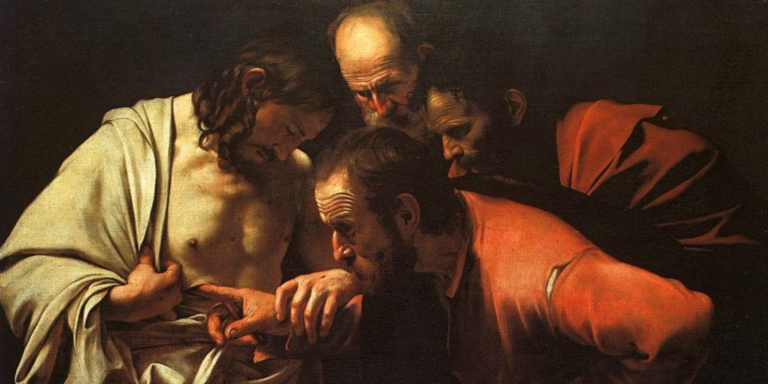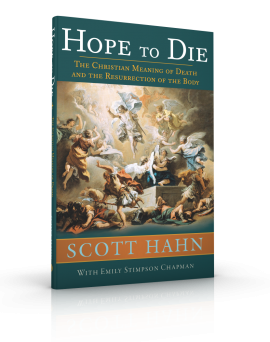By Scott Hahn
Dr. Scott Hahn is the best-selling author of over forty books, including Hope to Die: The Christian Meaning of Death and the Resurrection of the Body. He is the founder and president of the St. Paul Center and holds the Fr. Michael Scanlan Chair of Biblical Theology and the New Evangelization at Franciscan University.

Catholics often accuse the culture of being too materialistic. But our real problem is that the culture isn’t materialistic enough. We undervalue matter. We undervalue how God works through the physical to affect the spiritual. Most of all, we undervalue the body.
We live in a world that primarily sees the body as one of two things: a burden or a barrier. People see the body as a burden because it grows sick, it grows old, it dies. It fails all of us by not being strong enough or fast enough or attractive enough; by not being fertile enough or by being too fertile; by limiting us in a thousand different ways and preventing us from living the life we think we should be living.
People also see the body as a barrier or a boundary. We struggle to communicate to others who we really are and we struggle to understand who others really are. We long for communion, but don’t know how to give ourselves in the right way or receive the gift of others. We think we’ve been hemmed in by the body and long for the day we can be free of it.
But the Church proposes to us another way of seeing the body—as a bridge.
Our body isn’t the barrier that prevents others from knowing us. It’s the bridge that allows others to know us. By our words and gestures, facial expressions and actions, our bodies communicate the invisible truths about who we are to the world. Our bodies make us known in time and space. They allow us to serve others and be served by them.
Our bodies also allow others to see something of God. Made in the image of God, every body of every person expresses a profound truth about who God is. In our bodies’ ability to create and give and love, they reflect a God who is the Creator, the giver of all good gifts, and love himself. Moreover, in their ability to bring new life into the world, they image a God who is, from all eternity, life-giving love.
Everything about our bodies—their beauty, their strength, their tenderness, their endurance, their swiftness, their grace, their life-giving capacity—all of it reflects truths about who we are and who God is. They are the bridge by which the invisible passes into the visible and by which the eternal passes into the temporal. God reached us by entering time and taking on a body. Grace reaches our souls by traveling through our body. And grace reaches out into the world by traveling back through our bodies—through our hands, feet, eyes, and mouths. God’s love, God’s kindness, God’s mercy, and God’s care are made manifest in the world through our love, our kindness, our mercy, and our care.
Every single day, our bodies have the capacity to convey some of the most important truths about God and man to the world. Even in death, they speak about who we are. They attest to our weakness and our need for Christ. But they also remind us that there is more to come. The body at rest in death is not meant to stay at rest. The very wrongness we feel when we look at the body of a person who was just alive helps us know that death isn’t the end. More is still to come. From beginning to end, our bodies continue to teach the world about the dignity of the human person and the extraordinary fate that awaits us on the last day.
You Might Also Like
In Hope to Die: The Christian Meaning of Death and the Resurrection of the Body, Scott Hahn explores the significance of death and burial from a Catholic perspective. The promise of the bodily resurrection brings into focus the need for the dignified care of our bodies at the hour of death. Unpacking both Scripture and Catholic teaching, Hope to Die reminds us that we are destined for glorification on the last day.



